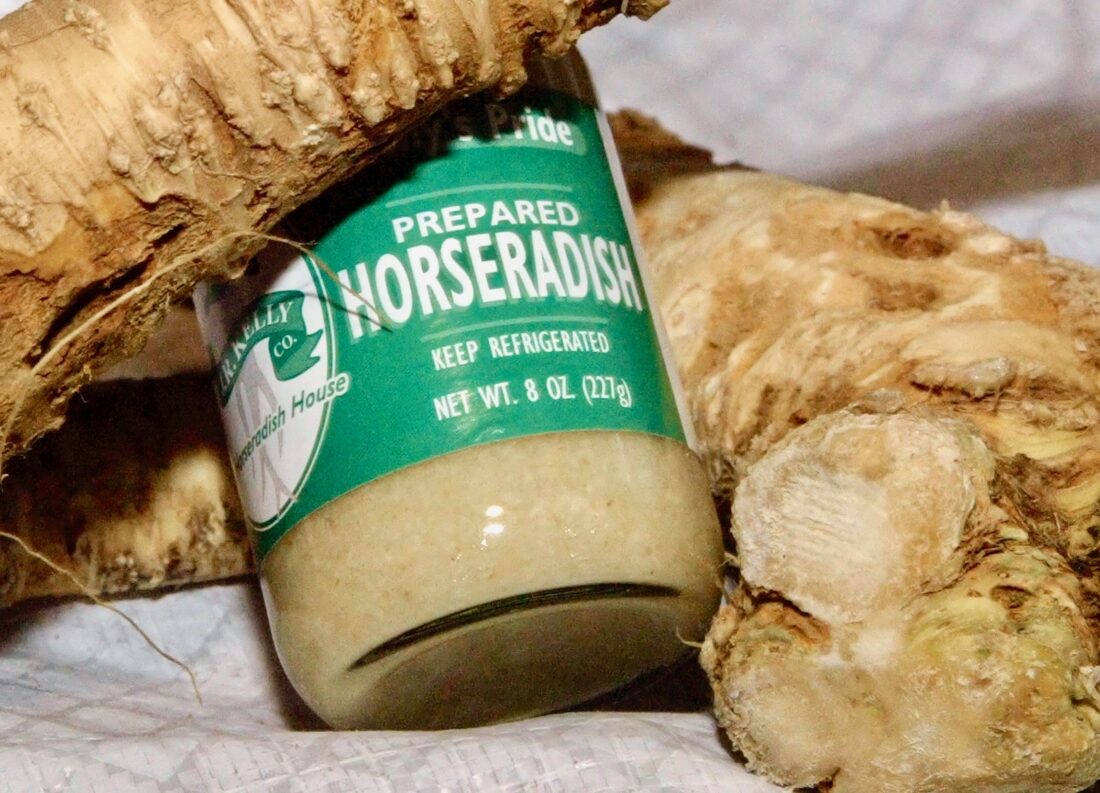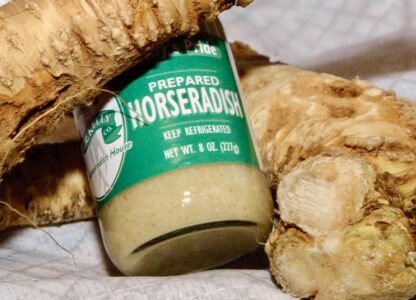Horseradish: A root crop that packs some heat
- A jar of prepared horseradish sits with a few horseradish roots at the J.R. Kelly Co., the nation’s largest shipper of horseradish roots, Wednesday, Dec. 13, 2006, in Collinsville, Ill. (AP Photo/Tom Gannam)

A jar of prepared horseradish sits with a few horseradish roots at the J.R. Kelly Co., the nation's largest shipper of horseradish roots, Wednesday, Dec. 13, 2006, in Collinsville, Ill. (AP Photo/Tom Gannam)
By J.J. Barrett
Hello Mid-Ohio Valley Farmers and Gardeners! October is here, so cool fall weather cannot be far behind. However, warm temperatures will be hanging on into next week, according to the weather forecast.
Many backyard gardeners still have tomatoes to harvest. You can only eat so many or share with family and friends. Why not preserve the harvest to enjoy throughout the winter months?
Tomatoes can be canned for juice, pizza sauce, spaghetti sauce and salsa. Cherry tomatoes are great for dehydrating and adding to favorites such as vegetable soup this winter. Fresh, vine-ripened tomatoes work great. To ensure safe acidity for canning, always add lemon juice (2 tbsp per quart) or citric acid (1/ 2 tsp) to enjoy your harvest later.
For more information on home canning and preserving, look up the National Center for Home Food Preservation, connected with the University of Georgia, College of Family and Consumer Sciences, at nchfp.uga.edu.
This week I want to talk about horseradish (Armoracia rusticana). Nothing goes better with shrimp than a good, homemade cocktail sauce using ketchup and horseradish. The horseradish supplies the zing. It would be especially cool if you made the sauce with ground horseradish from your own garden.
Horseradish can also add a little extra wow to steak sauces, salad dressings and hummus, and is added to mayonnaise (Arby’s calls theirs “horsey sauce”). Horseradish is a perennial herb and may grow to 2-3 feet tall in the garden. It has a distinct and easily recognizable rosette growth habit with several erect and long-petioled leaves originating from a central crown.
However, the pungent roots are the part of this plant we grate up for horseradish sauce. This plant has a deep root system that branches out with numerous rootlets. These thick and fleshy roots are white on the inside and brown on the outside. The roots may be available at farmers’ markets and some grocery stores.
Similar to the history of many plants, horseradish was originally used as a medicinal herb. It has been used as a cough expectorant and treatment for ailments such as food poisoning, scurvy, tuberculosis and colic. It is native to the Mediterranean and has been growing wild
in Britain and other parts of Europe for centuries. The Egyptians used horseradish as far back as 1500 B.C., and early Greeks used horseradish as a lower back rub and aphrodisiac.
It is unclear where the name horseradish came from, but it is called Meerrettich in German (which means sea radish) but sounds like “mare” radish in English. The French call horseradish Moutarde des Allemandes, or “mustard of the Germans”.
The main hub of horseradish production in the world is Illinois, located in the deep, fertile soils of the Mississippi River Valley. Over $10 million worth is harvested from 1,500 acres of U.S. farmland.
Horseradish is a member of the mustard family (brassicaceae), which includes cabbage, broccoli and kale. It is a true perennial, like asparagus and rhubarb, and packs a serious kick to clear the sinus cavities. When the roots are cut or grated, the chemical allyl isothiocyanate is unleashed through a chemical reaction. This is the stuff that affects the sinuses and makes the eyes water.
This is also why we add vinegar to stop this reaction. The sooner you add vinegar when processing, the more mild the “horseradish” flavor. If you are planning to start some horseradish next spring, a little advance planning will help.
Horseradish thrives in rich, well-drained soil, so it is a great idea to incorporate manure or some good compost in the fall. It tolerates a wide soil pH range of 5.5 to 6.8 and is easy to grow here in West Virginia. Soils need some depth as well because roots may be malformed and yields may suffer in hard, shallow, stony soils.
Horseradish is not started from seed but usually planted using root cuttings called sets. If a neighbor or friend has horseradish, you can save some cuttings from this fall’s harvest to set next spring. If not, many nurseries such as Nourse Farms, Johnny’s Seeds and Daisy Farms offer root cuttings for sale.
The main or “primary” root is usually harvested to sell or process and the “secondary” roots are trimmed and saved to plant next spring. It would be wise to plant this crop in its own raised bed or isolated section of the garden. Till the soil deep in the spring and space the rows 3-4 feet apart, with 18-24 inches between plants in the row.
The cuttings are usually pencil size in diameter and anywhere from 7-15 inches in length. Lay the sets horizontally, with the head (large end) slightly elevated. Cover the sets with six to eight inches of soil, forming a ridge one to two feet wide. After leaves appear you can apply some compost. You can use a fertilizer such as 5-10-10; just avoid anything high in nitrogen.
Horseradish is drought tolerant, but yields will suffer if moisture is severely limited. Control weeds early when plants are small. Horseradish has a long growing season, so it is important to get a good start.
If you want to grow large horseradish roots you will have to do what the industry calls suckering or lifting. Both of these methods will result in a larger main root (1-2 pounds). During the growing season, crowns with multiple shoots will form above the ground while the original set grows in diameter with many side roots in the soil. Suckering is removing all but one or two leaf shoots at the head end as they develop. Lifting is done by digging through the ridge and gently lifting with a hoe to break roots forming at the crown.
Harvest can begin after the first killing frost in late fall. Use a shovel or spading fork to dig up the large central root and as much of the secondary root system as possible. Side roots can be saved for next year’s crop. Any broken pieces left in the soil will become volunteers next spring, which is why most commercial farms treat horseradish as an annual.
Roots can be dug up all winter, as long as the ground is not frozen. Dug roots can be stored in the refrigerator for many months, wrapping them in plastic to conserve moisture.
To prepare horseradish for eating, first make sure you do it in a well-ventilated area. The volatile oils released pack quite a wallop. Peel and grate the roots and grind the pieces in a blender or food processor. Add a small amount of water or crushed ice to keep the mixture cool.
Then add 2-3 teaspoons of white vinegar and a pinch of salt per cup of horseradish. The timing of when you add the vinegar is important because it stops the enzyme reaction. Adding it immediately will produce a mild flavor, and the longer you wait the stronger the horseradish flavor. Enjoy!
Contact me at the Wood County WVU Extension Office 304-424-1960 or e-mail me at jj.barrett@mail.wvu.edu with questions. Good Luck and until next time, Happy Gardening!

